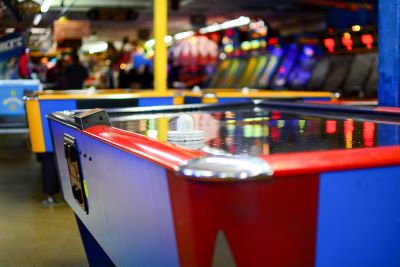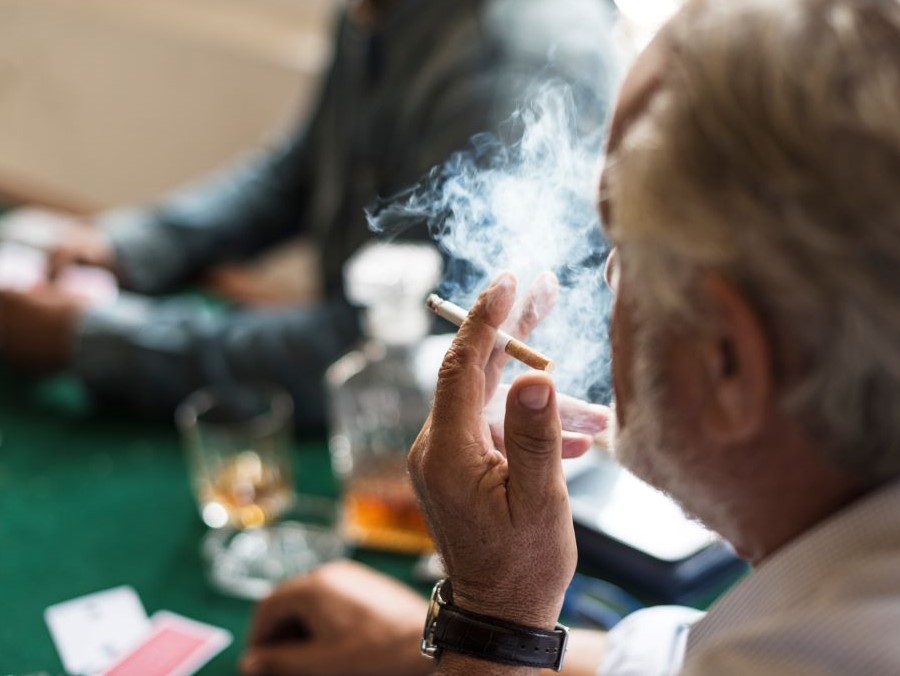Second-hand smoke in indoor casino areas is up to 18 times more harmful than outdoor levels, according to a University of Nevada, Reno study published this month in the Environmental Analysis Health and Toxicology Journal.
According to the study, led by Associate Professor Eric Crosbie in the School of Public Health, of the indoor casino locations, including family-friendly locations that are designated as non-smoking such as arcades and restaurants, measured unsafe levels of second-hand smoke, even when only a small proportion of smokers are actively smoking in a casino.
The research found that ventilation systems do not work in preventing unsafe levels of second-hand smoke from drifting to areas where smoking is not allowed, and this finding has nationwide implications for any indoor facility that allows smoking, as there is no safe level of second-hand smoke regardless of the age, size or ventilation systems.
“People should be aware that when they go into any establishment that allows smoking, there is an unhealthy level of second-hand exposure, especially for those individuals who have acute risk factors,” Crosbie said. “The only way to eliminate involuntary exposure is to prohibit smoking in all indoor areas.”

Crosbie and his team of researchers measured the amount of PM 2.5 (atmospheric particulate matter) levels present, which consistently exceed safe thresholds. PM 2.5 levels, when compared with the more commonly known Air Quality Index, rank within the “unhealthy for sensitive groups” category. Exposure to secondhand smoke can cause heart disease, stroke and lung cancer among nonsmokers, and even brief exposure can cause harm, including heart attacks, according to the Centers for Disease Control and Prevention (CDC).
The study calls for policy changes to protect minors, casino employees and other vulnerable populations exposed to unhealthy air during a casino visit.
“Establishing comprehensive smoke-free casinos is the only way to protect against the harms of second-hand smoking,” Crosbie said. “Given that several casinos in the Reno-Sparks area advertise their establishments as family-friendly, they should be aware that even during brief visits by minors in smoking and non-smoking areas, minors may be exposed to harmful levels of second-hand smoke. These findings underscore the critical need for immediate action to create healthier indoor environments.”

Other studies have also found PM 2.5 levels in casinos, including those located in Nevada. A study published last year by the CDC and the University of Washington examined casinos in Las Vegas and found that average PM 2.5 levels were 5.4 times higher in gaming areas where smoking is allowed when compared with a smoke-free casino in Las Vegas. That study also concluded that tens of thousands of casino employees and tens of millions of tourists are exposed to elevated levels of secondhand smoke in Las Vegas casinos each year, and the only way to protect people from this known health hazard is to prohibit smoking in all indoor areas.
Crosbie recommends that Nevada policymakers amend the Nevada Clean Indoor Act and prohibit smoking in all public places, including casinos and bars statewide.
About the study
Crosbie and his team visited 14 casinos and 18 distinct types of indoor casino locations throughout Washoe County, Nevada. High levels of tobacco smoke markers were found in casino locations even when zero or a small percentage of active smokers were observed.
The research team observed a relatively small portion of active smokers (1.4 percent to 20 percent) in casinos that allowed smoking. Consistent with these findings, a small proportion of smokers can still contribute to high levels of PM 2.5 and contaminate non-smoking areas.
This was also the first-known study to use the AtmoTube, an off-the-shelf, low-cost, user-friendly consumer device with custom mobile apps that measures real-time personal exposure.















